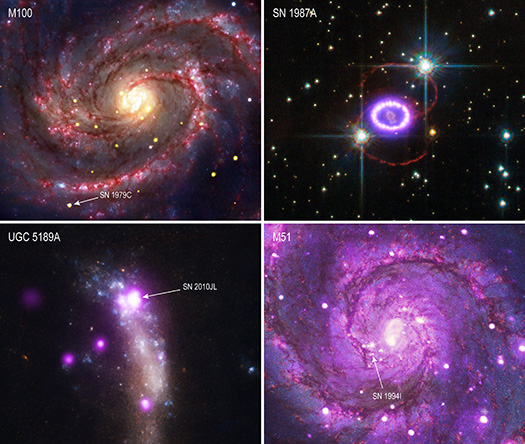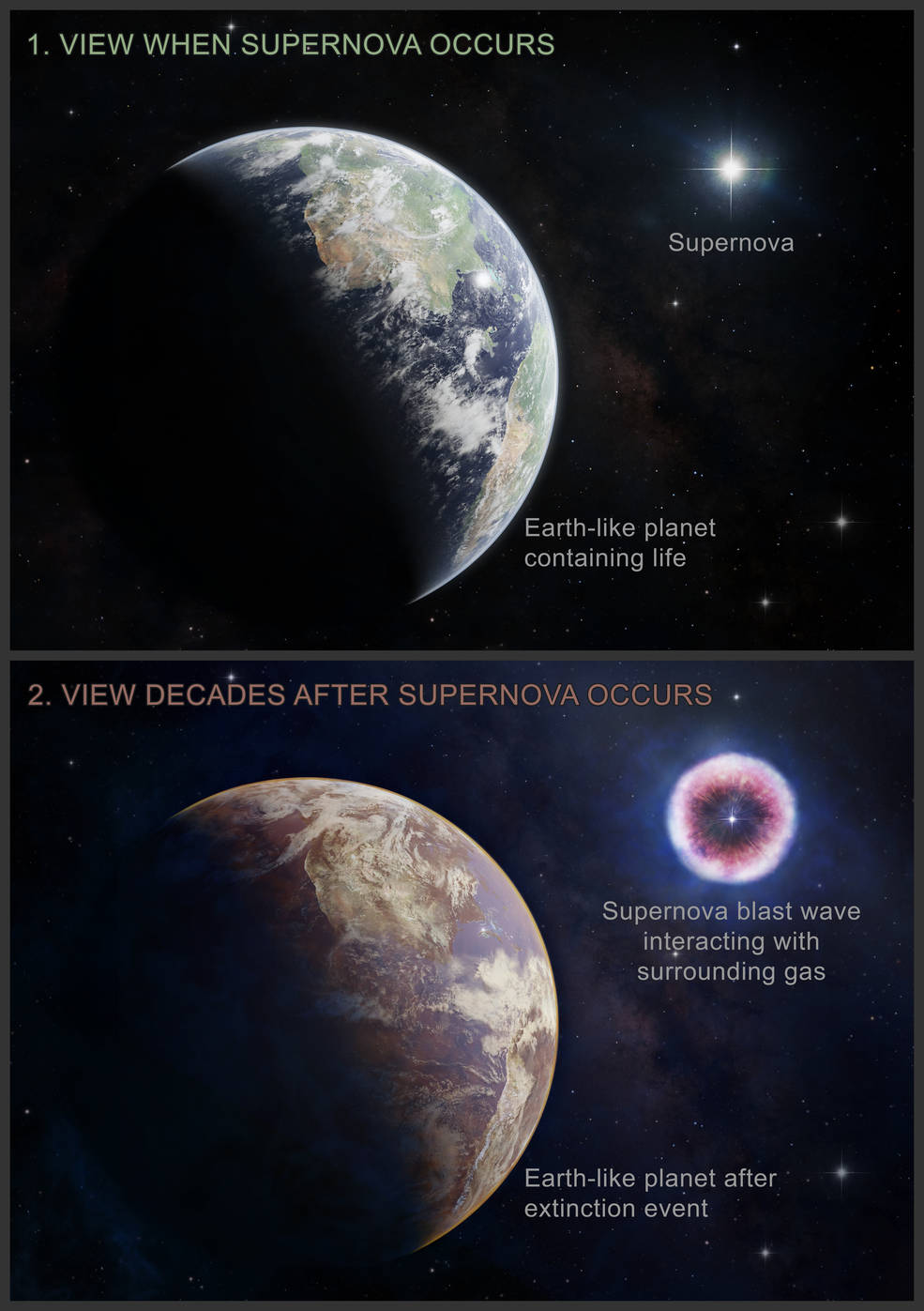Using data collected by the Chandra Observatory and other telescopes, astronomers have identified a new threat to life on Earth-like planets. We are talking about the intense X-ray radiation produced by supernovae. It is capable of affecting planets located within a radius of 100 light-years from the explosion site.
Dangerous supernovae
Supernovae represent one of the brightest events in the Universe. During their explosion, as much energy is released as our Sun produces during its entire lifetime. Of course, such a powerful cataclysm cannot but have an impact on nearby planets.

Until recently, all scientific work on this topic focused on two main aspects: the intense radiation produced by a supernova in the first days and months after the explosion, as well as charged particles that will then bombard them for the next hundreds and thousands of years. However, in the course of the new study, astronomers focused on a previously little-studied factor: X-rays.
Destruction of the ozone layer and mass extinction
A team of scientists from NASA analyzed data on 31 supernovae collected by the Chandra, Swift, NuSTAR and XMM-Newton telescopes. They were interested in the question of how their X-ray radiation could affect the atmosphere of an Earth-like planet. The study shows that within a few years it can destroy most of the ozone layer, which will lead to a sharp increase in dangerous ultraviolet radiation reaching the surface. It can provoke the death of a large number of species (especially marine ones), which will lead to the destruction of food chains and global extinction.

In addition, a combination of X-rays and an increased level of ultraviolet radiation can lead to the formation of a large amount of toxic nitrogen oxide in the atmosphere of the planet. As a result, it will be covered with a so-called brown haze, which will lead to the mass death of plants. The study showed that similar consequences threaten planets located within a radius of 100 – 160 light-years from a supernova.
According to scientists, our Solar System is currently in a safe zone and there are no stars at a close distance from it that will become supernovae in the foreseeable future. At the same time, the study of sedimentary deposits suggested that a supernova exploded near our planet between 2 and 8 million years ago. According to various estimates, it was located at a distance of 65 to 500 light-years from Earth. It is also worth noting that the results of the study may lead to a serious reassessment of the galactic regions favorable for the emergence of life.
You can also read about how an astrophotographer showed incredible details of Vela supernova remnant.
According to https://www.nasa.gov
Follow us on Twitter to get the most interesting space news in time
https://twitter.com/ust_magazine

